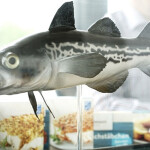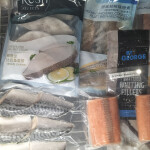Increased adoption of new technology has joined health, sustainability, the cost-of-living crisis, and other topics on a list of converging trends that are influencing a global seafood market projected to reach USD 605.5 billion (EUR 562.1 billion) in value by 2029, a new report from the Norwegian Seafood Council (NSC) has found.
Based on internal analysis and key industry insights, “Oceans of change: seafood trends for 2024” – the fourth report in NSC’s annual “Top Seafood Consumer Trends” series – declares the seafood industry to be at a crossroads in regard to technology, with the path forward requiring a blend of consumer awareness, industry adaptation, and regulatory foresight to ensure success.
“This journey offers immense opportunities for stakeholders to redefine the norms of seafood production and consumption, aligning them with those of a rapidly changing world,” the report said.
The report found strong demand for supply chain transparency and a growing appetite for convenient, nutritious proteins.
“The seafood industry can use technology to streamline processes, saving money and potentially making products more affordable to consumers,” the report said. “As well as offering the potential to cut waste and costs, innovation also addresses many of the questions around the sustainability of fish and seafood as an essential – and increasingly important – source of protein.”
NSC, the trade body for the Norwegian seafood sector, said besides taste and tradition, a third main driver of seafood consumption has become health, as people determine that eating seafood can aid them in living longer and better lives by helping them avoid illness.
“Fish and seafood was always a healthy choice, but that healthy lifestyle was further thrust into the spotlight under Covid-19 and has become a lasting legacy of the pandemic,” the report said. "Research consistently points to a broad score of health benefits associated with regular seafood consumption – from weight management to a reduced risk of obesity, enhanced nerve cell function, inflammation regulation, and support for a robust immune system. There is also compelling evidence suggesting that incorporating seafood into your regular diet can lower the risk of developing both type-2 diabetes and cancer."
The report cited a OnePoll survey that found 70 percent of Americans consider themselves to be more health-conscious as a result of the pandemic, with 64 percent saying they were motivated to lose weight because they know it has an impact on their immunity. Six in 10 Americans had a greater understanding of how a healthy diet and lifestyle could better protect their long-term health.
These changes in the ways consumers buy and consume seafood are being addressed by newly introduced product concepts and globalizing food trends, such as poké and sushi, according to NSC Executive Director Christian Chramer.
"What’s striking when I move around the markets where we operate and have offices is just how really global poké bowls have become. They’re in Brazil, the U.S., in China, in Japan, in France. You find them from Sweden to Greece. The endlessly adaptable options allow each country and each consumer to tailor their bowl to their tastes, [and] the trend appeals across age groups, too," he said. "Salmon has been the lucky winner of, first, the sushi megatrend, then the sashimi megatrend, and now also the poké bowl megatrend. It is the globalization of salmon."
Even as they develop tastes for new foods and product types, more consumers are seeking ways to save money, such as switching stores, looking for coupons and discounts, or simply eating more often at home – a trend the NSC expects to continue into 2024.
"This health focus [is] a new norm," Chramer said. "For many – in Europe at least – it’s about balancing a desire to eat healthier with what you can afford to eat."
But, at the same time, consumers don’t want to compromise on quality or sustainability, even as prices rise. To address those concerns ...








